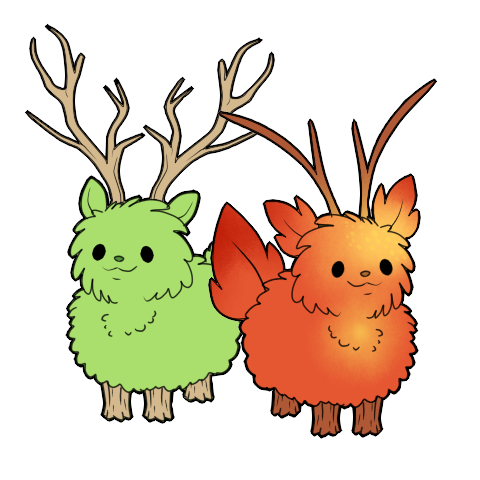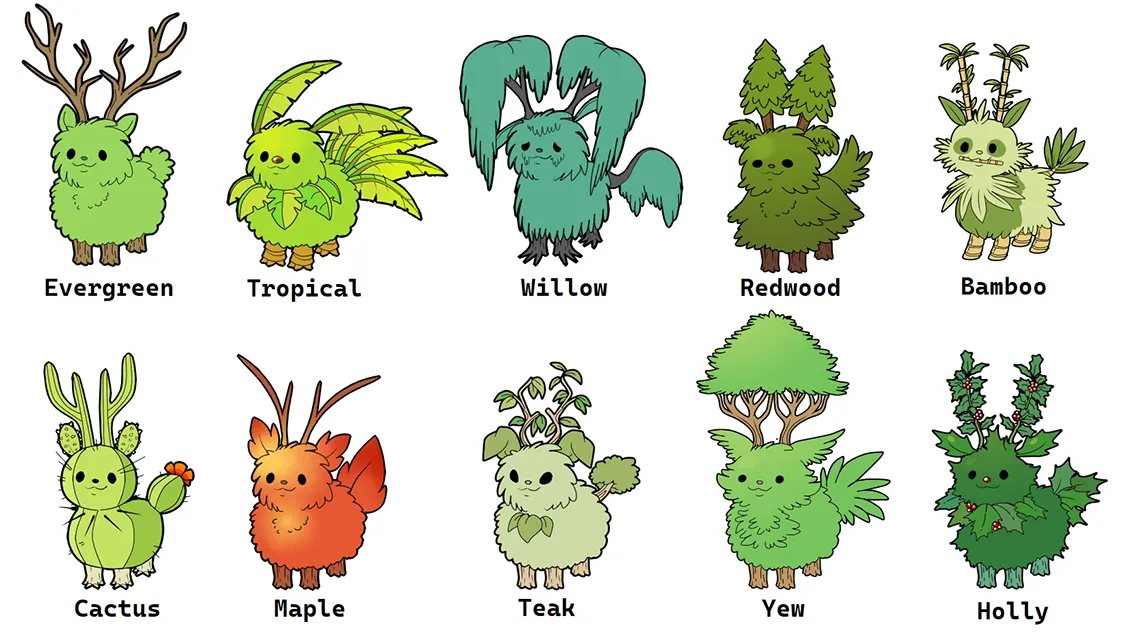Bushelberry


 /ˈbʊʃəlˌbɛri/
/ˈbʊʃəlˌbɛri/Bushelberries are a plant-based species native to the planet Eophrelush.
They are a semi-sapient species most commonly found in great woodland herds but – being very widespread – they have adapted to thrive in nearly every biome. They are very quick to reproduce. Bushelberries are hermaphrodites, and they breed via pollination. It’s the result of this process that they have come to inhabit nearly every part of their home planet, Eophrelush, except for her farthest reaches and tallest peaks, where her air is too cold, and where nothing grows.
The bushelberry shares a similar stature to a small dog. Though its size will vary by breed, it is on average roughly the size of a border terrier. Having spread to inhabit every corner of Eophrelush, from evergreen forests to dry deserts and from dank swamps to icy plains, bushelberries have adapted to every environment, and can be found in many forms. Being plants, however, they must spend lots of their time outside, and they require plenty of rain and sunshine to thrive.
Most forms resemble trees. From the weeping willow to the mighty oak, bushelberries have evolved to mimic all the trees of Eophrelush. This ability to mimic the local foliage in this manner is a form of camoflague and a defence mechanism, protecting the bushelberry sapling from birds and other predators when they are at their most vulnerable.
Bushelberries have round, squat bodies, and most of them have a kind of rough dark skin with the texture and hardiness of bark. A notable exception, however, is the cactaceous bushelberry, which instead has a green and waxy skin covered in small spines. All breeds of bushelberry are quadrupedal, with strong, stout legs of wood and bark. They have prominent bushy tails upon which (in some breeds, at least) flowers may bloom, and all breeds possess large antlers too. Although bushelberries are herbivorous and dislike confrontation, they are not afraid to hold their ground, and will use their antlers for self-defence when threatened.
Despite their herbivorous ways, bushelberries are great lovers of food. What they eat depends upon their native environment, but a typical diet will include fruits and vegetables, grass, dry leaves, wood chips, and plant stalks and twigs – not, of course, from their fellow bushelberries! In addition to food, nearly all breeds of bushelberry require sunlight to thrive. If deprived of sunlight for prolonged periods, they become unable to synthesise essential nutrients from the earth, and without them they will eventually wither and die. Their antlers bear fruit in the summer season, and they share it freely. Being themselves immune to poisons, bushelberry sap also contains medicinal qualities, working as a mild antidote against the venoms of many a Eophrelushi predator.
As we mentioned before, it is perhaps the most remarkable ability of the bushelberry that it is able to, as a sapling, mimic the appearance and scent of its natural surroundings, in order to camoflague itself from predators. They take their form very early on and so, once they begin growing, they cannot then change their form for a second time. Bushelberries all over Eophrelush have adapted to many kinds of forest, and there have even been reports of desert herds resembling cacti!
Though they cannot speak, bushelberries are highly adept at other forms of communication. To communicate with fellow members of their own species, they release and receive pheromones, through which they can communicate emotions and warnings. Being highly intelligent, they can learn to understand their masters, and they can convey their own feelings, needs and opinions through a combination of chirps, growls and other vocalisations.



